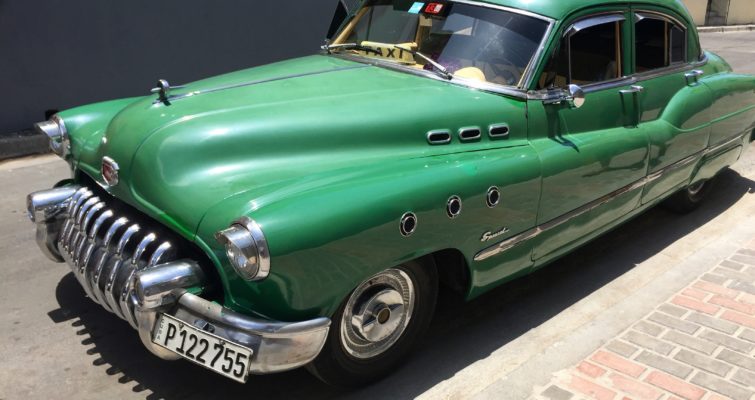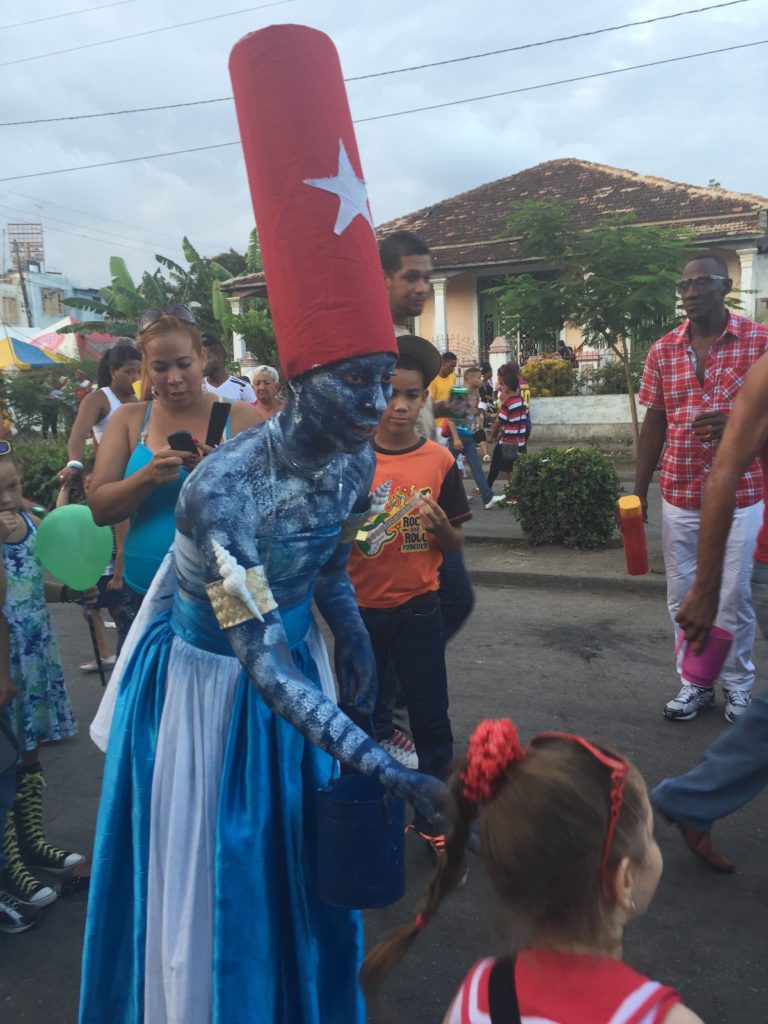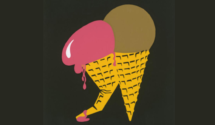
Traveling to Cuba these days: What’s changed and what hasn’t
I constantly hear people confused about the changing relationship between the U.S. and Cuba… and what that means for us as travelers. So here’s a rundown of what’s changed and what hasn’t.
Also, my next post will explore options for private trips to Cuba. So if that might interest you, stay tuned!
What’s legal
New embassy or no new embassy, not much has changed for our purposes. Traveling to Cuba is exactly as legal as it was a year ago before all the hoopla. That is, the twelve categories of travel allowed by the Treasury Department – for journalism, research, family visits, etc – have not changed. They cut down on red tape, but didn’t change or broaden those twelve categories.
Going to Cuba as an independent tourist is still illegal. It hasn’t suddenly “opened up,” and you still can’t “just go” on your own. For people who want to go but don’t fit one of Treasury’s narrow categories, the best option is still a People-to-People trip. (Those are the kind of trips I organize.) Some people just go illegally on their own, through Mexico or Canada – but that’s gotten much harder lately, as I’ll explain in a minute.
The biggest change in what’s legal is the mode of transportation: you can now travel to Cuba by boat. There’s a ferry service starting up from Florida to Cuba this fall, mostly geared towards Cuban-Americans. There will be cruise ships starting next year. So flying is no longer the only option.
I also want to touch on money: In theory, our ATM and credit cards should now work there, and I know lots of people are excited about that. But don’t start celebrating yet! I’ve heard about problems trying to use plastic in Cuba… including a guy whose card was eaten by an ATM. And even once it’s legal, few places in Cuba have the equipment to swipe your card anyways. So for the time being, don’t rely on plastic. Just take all the cash you’ll need and rely on that.
Supply and demand
Cuba’s capacity for tourism hasn’t changed. But the number of people trying to visit has skyrocketed! Everyone wants to get there while Cuba is still Cuba. Things have gotten so crazy, my travel colleagues in Cuba are all reeling – and constantly complaining.
This increased demand has had two major effects on Cuba’s tourism sector: increasing costs and reduced availability.
Increasing costs: Because demand is so high, hotels have been increasing their prices to make the most of it. Like good capitalists, they’ll surely keep ratcheting up their prices for as long as the market will tolerate it. I expect everyone else involved in tourism to follow suit, from restaurants to taxis to tour guides to casas particulares (private B&B’s). Hotels are also instituting draconian cancellation policies.
Reduced availability: This could be an entire blog post. I’ve seen problems in hotels, private B&B’s, transportation, restaurants, shows, other attractions… pretty much everywhere.
The good Cuban hotels are selling out far, far in advance. You can start planning a trip six months out and discover they don’t have any rooms left, or not as many as you needed, or not on the days you wanted. And not just that – they’re overbooking. Car rental agencies are doing the same thing. So you can show up with a reservation and find there’s no hotel room or car waiting for you.
Then what happens? You may be rerouted to a worse hotel. This happens all the time. A car rental agency may have you sit around for 6 or 8 hours until they find you something, and not necessarily the type of car or at the rate you’d reserved. Or maybe it’ll be ready for you the next day, as just happened to a friend of mine. In Cuba, this isn’t such a big deal as it would be in the U.S. There’s no customer service hotline waiting to hear your sob story and make things right. You’re on your own.
Private B&B’s are filling up, too… and there aren’t enough rooms to go around. One owner-operator told me about a group of four travelers who recently showed up to her home at midnight looking for a place to stay. She was full and couldn’t even find any friends with a room available. So these four hapless voyagers had to keep wandering the streets. Even worse, sometimes a B&B will take in wandering travelers – even though the room was reserved for someone else, who’s suddenly SOL. This just happened to me last month, and I’ve been hearing stories from others as well.
Restaurants and shows can be tight, too. Once Carnival’s cruise ships start to show up, it’ll get really bad on certain days of the week. If you have your heart set on a particular spot, make a reservation at least several days in advance. The most difficult will be anything with a top rating on TripAdvisor, anything featured in popular guidebooks, and any big name shows like the Tropicana or Buena Vista Social Club.
And apart from unavailability, lines everywhere have gotten longer. I’m encountering unusual wait times at hotel concierges and tourism desks; at restaurants; at the bus station; and so on. Last month I waited at one hotel tourism desk for an hour when they ran out of receipt books and had to shut down, sending us all scurrying to other nearby hotels, where we went straight to the end of the line. I ended up spending three hours that day just to buy a pair of tickets. Not fun. The only good thing about it was, my travelers spent those three hours blissfully ignorant of the pain I spared them.
None of this ever used to happen, so people aren’t prepared for it. They find a TripAdvisor forum that says, “Renting a car in Cuba is easy!” or “To get tickets for the Tropicana, all you have to do is…” But that’s the old Cuba.
Navigating the new Cuba
Because Cuba’s operating above their capacity, there’ll always be somebody getting screwed. You don’t want to be that somebody. Here are my tips:
One, don’t just show up without a plan and expect things to magically work out. Either hire someone to handle your arrangements or put some effort into it yourself. Book any reservations or arrangements well in advance… and then confirm and reconfirm the hell out of them, preferably by phone. I normally spend $60 to $100 on this every trip. Cuba is naturally kind of chaotic, this is a particularly bad moment, and it’s better to stay on top of things.
Two, use relationships. Relationships are huge in Cuba! You want that working for you and not against you. I do this with rental cars, using an agency where I’ve got a friend. He makes sure I get taken care of… and I take good care of him. On my last trip, that meant the difference between a dirty old rental car and a nice new one. I use relationships at hotels too, so I won’t be the one rerouted when they run out of rooms. What does this mean for you? If you’ve got friends or family in Cuba, have them make all your arrangements at places where they have a personal connection. If not, hire someone with connections.
Three, be flexible. Cuba often feels like a chaotic, irrational system where nothing goes the way it should. Even Cubans complain about this all the time, and they’re used to it! We’re not. (Though I’m slowly getting used to it.) I prepare for things to go wrong, have backup plans ready, and expect to spend extra time and money managing all the craziness. When I do it right, my travelers have a seamless experience; but it definitely takes some doing. If you encounter problems yourself, roll with it, and don’t let it get to you too badly! None of it’s personal. All the obstacles we encounter give us an idea of what Cubans have to deal with all the time.
What’s ahead
I don’t see big legal changes on the horizon. Opening things up to independent travel would take an act of Congress. So would an end to the embargo. Our current Congress isn’t interested, and I’ll be stunned if the next Congress looks much different. The only huge question for me is what happens if Marco Rubio gets elected. Maybe he raises legal barriers to travel back to Bush-era levels – and audits the hell out of us all.
The biggest upcoming change I see is the arrival of U.S.-based cruise ships. Just imagine Carnival’s cruise ship dumping 700 travelers into an Old Havana that’s already at capacity. I’ll be paying close attention to this… and planning my trips to avoid the big cruise days in every city.
All these changes I’ve mentioned are very new. A year ago, Cuba was naturally chaotic, but still a much easier place to deal with. Not anymore! Talking to my colleagues, I’m hearing one horror story after another – even in July and August, the lowest of the low season. As we move into the high season, it’s only going to get worse.
Anyways, welcome to Cuba! This is the new normal.
On a lighter note, here’s a pretty picture:

If you get past all the annoyances, Cuba’s a great destination! Santiago de Cuba, the nation’s second largest city, is famous for its annual Carnavales celebration. Street performers dress up and paint themselves, then move through the streets drawing attention and creating photo ops. The Carnavales of Santiago take place every year in late July.




4 Comments